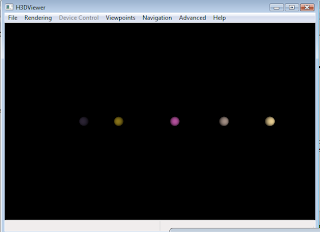I am creating a parallel manipulator haptic device based on a delta platform. The goal is to use a cheap set of mechanical parts (in this case Erectors) to get a functional design in a short amount of time. The main purpose is to learn about control of physical designs (as opposed to simulation). As well as being quick to setup the Erectors allow for reconfigurability. If I find that the lengths of certain components are too long or two short it doesn't require time spent into machining new parts.
An Arduino Duemilanove is being used as the microcontroller. The Arduino is an open source hardware/software project that uses Atmel microprocessors. It has 6 analog inputs and 13 digital I/O. It is programmed using a program based on Wiring. It is similar to C/C++ and is compatible with C/C++ libraries. More information about the microcontroller can be found here.
One advantage of using an Arduino over a Board of Education or other microcontroller, for example, is UART communication. Information can be sent over serial, meaning it can interface with Matlab and Simulink fairly easily.
There will be 3 potentiometers, one per servo, to sense the actual position of each leg. This information can be send to the computer via the analog in pins on the Arduino.
Preliminary work on manipulating an individual leg within Matlab/Simulink has been started. Full control is not yet developed.

